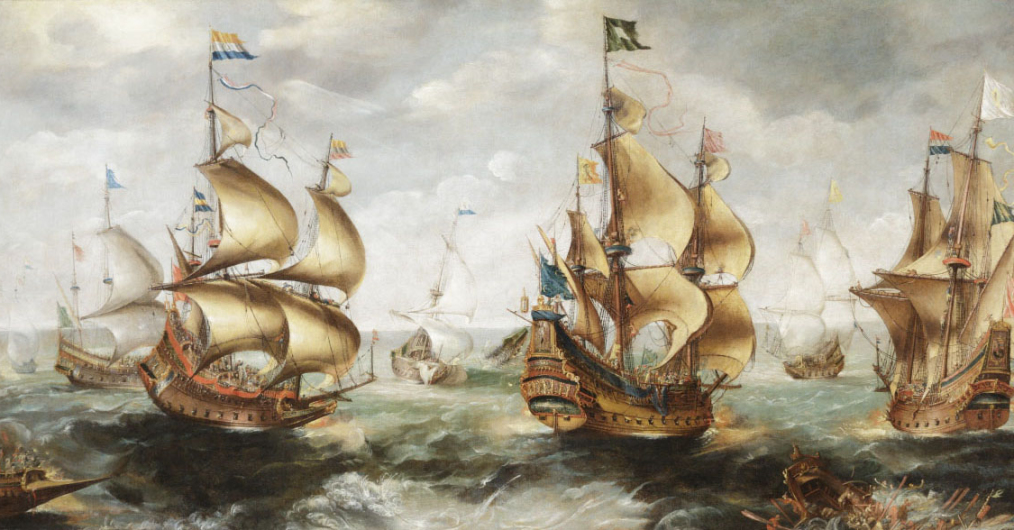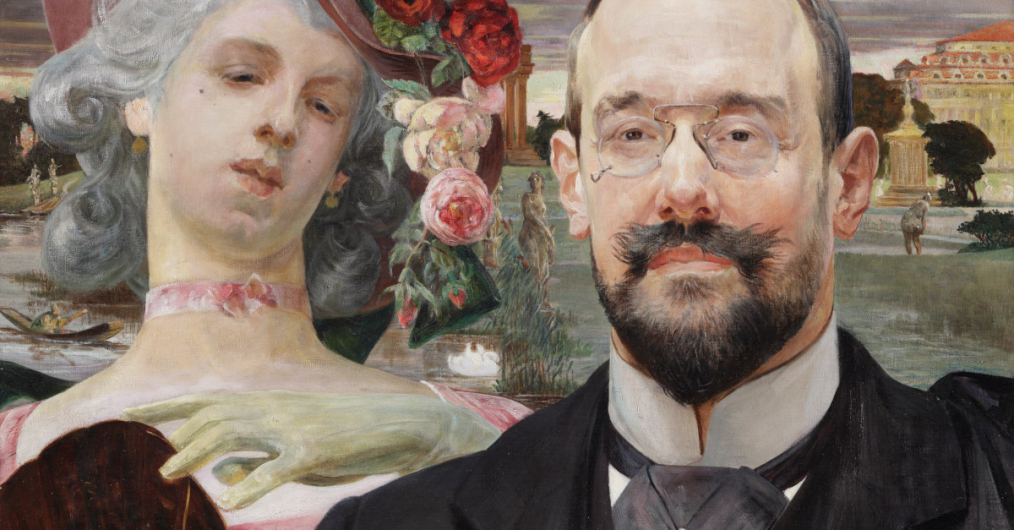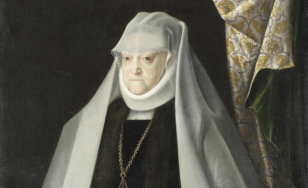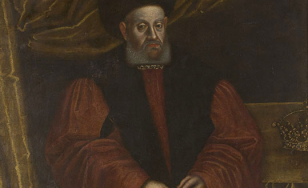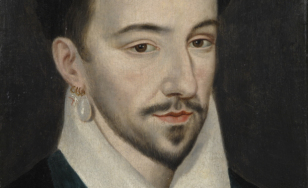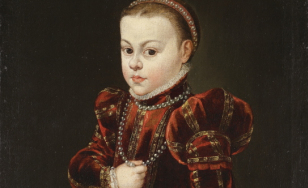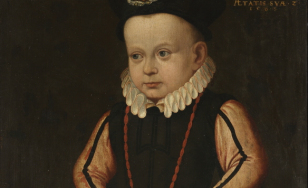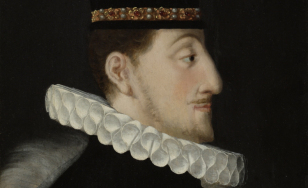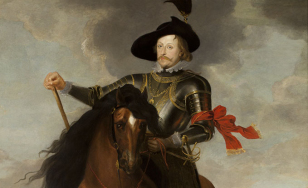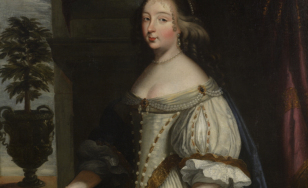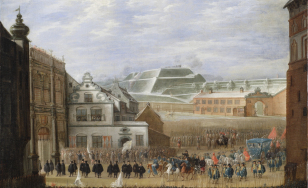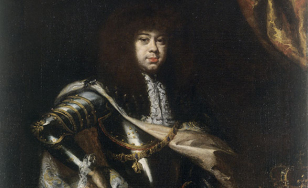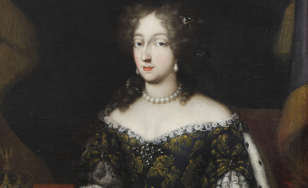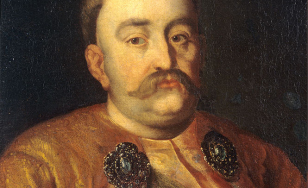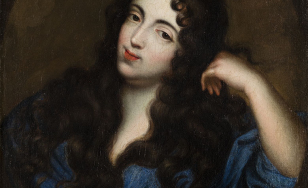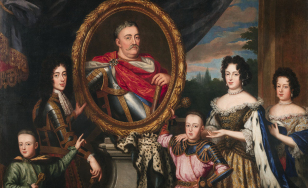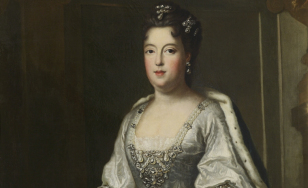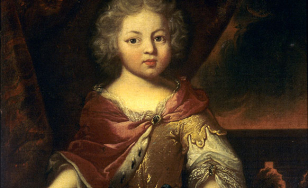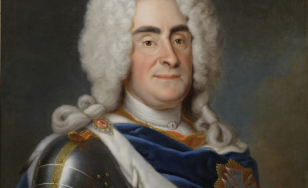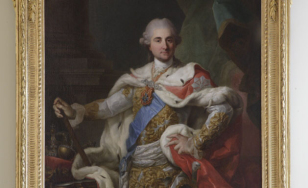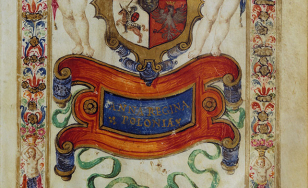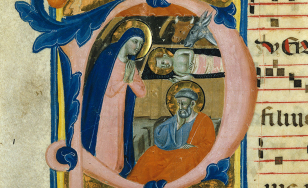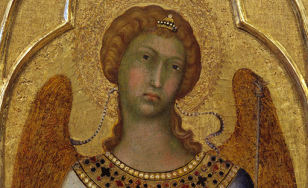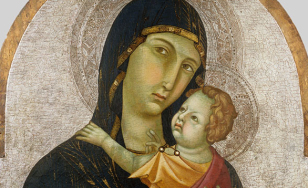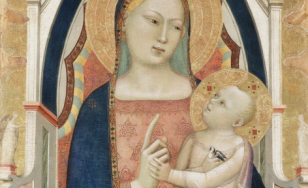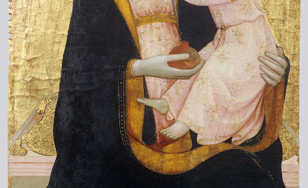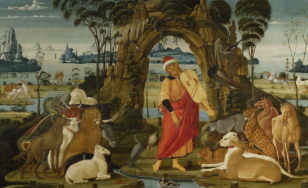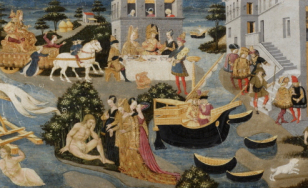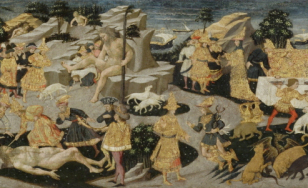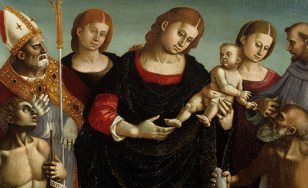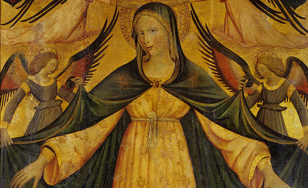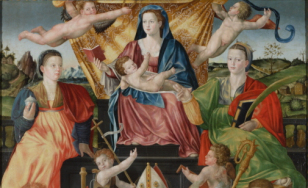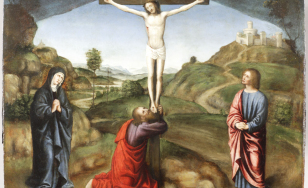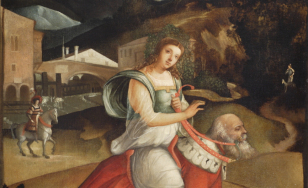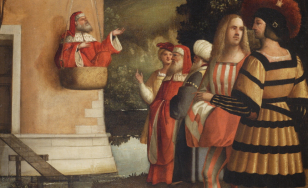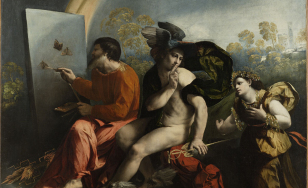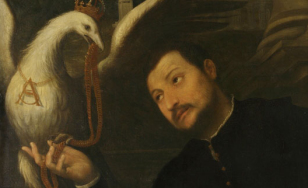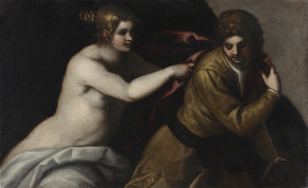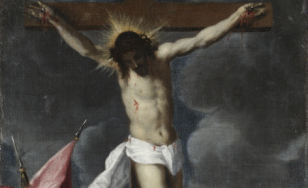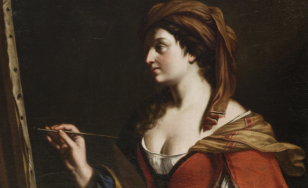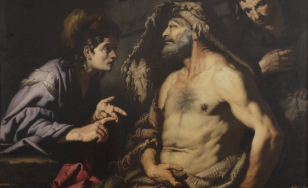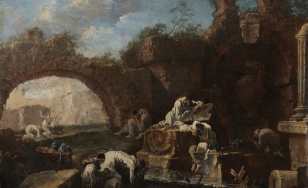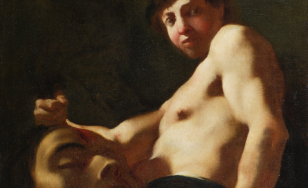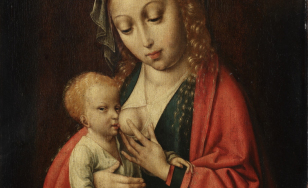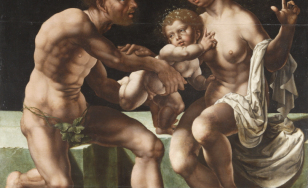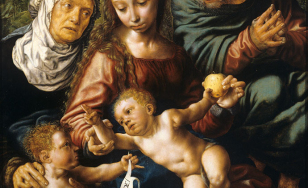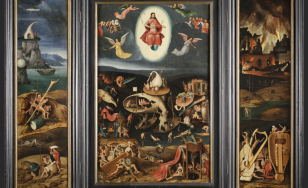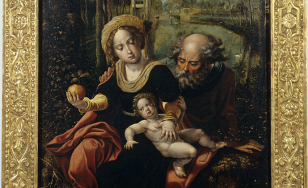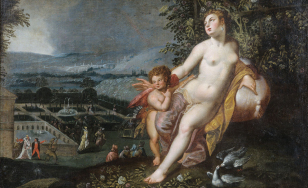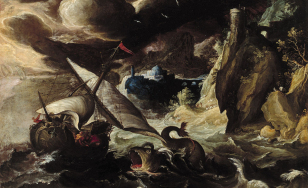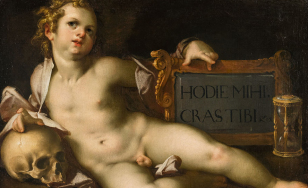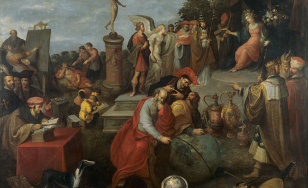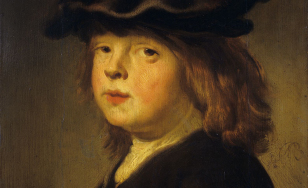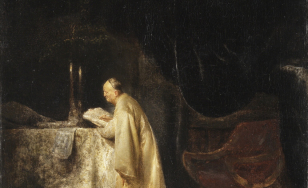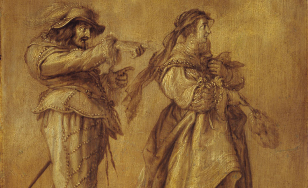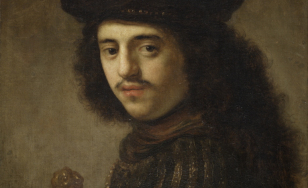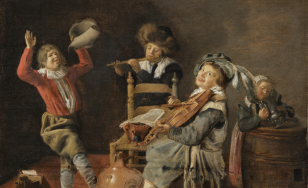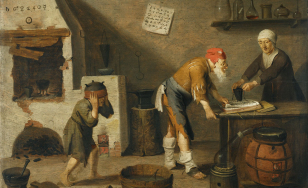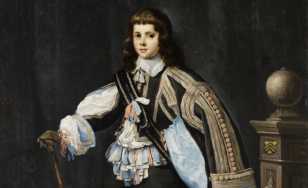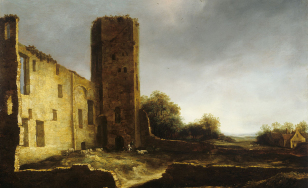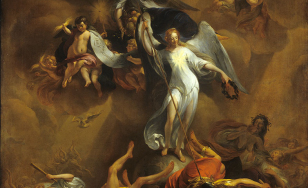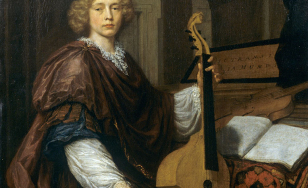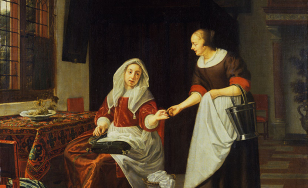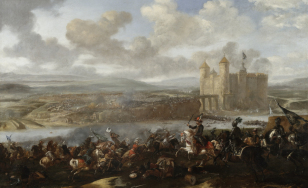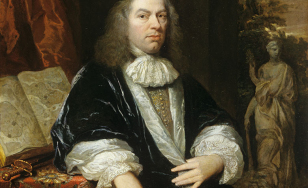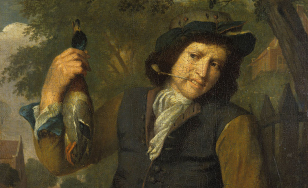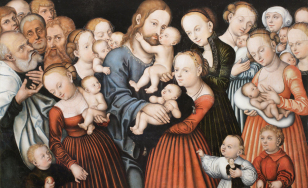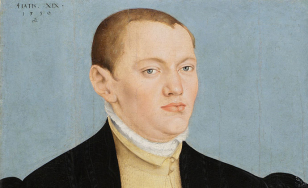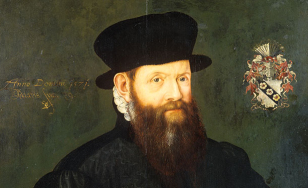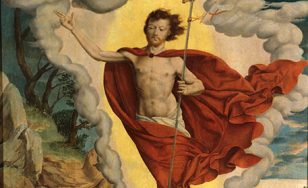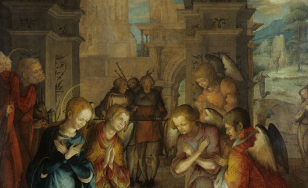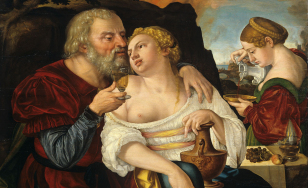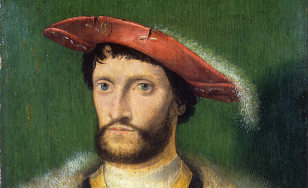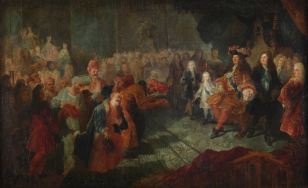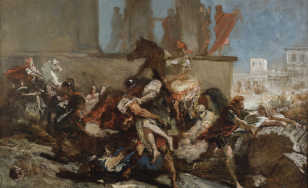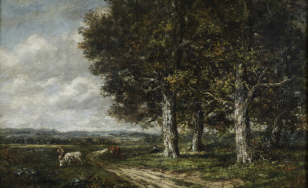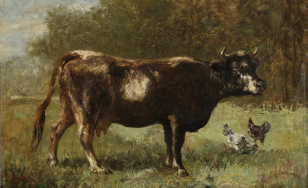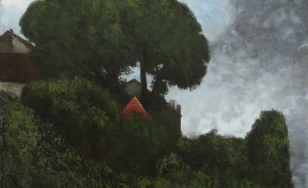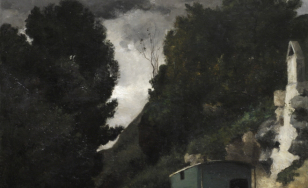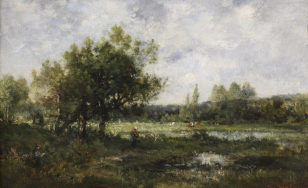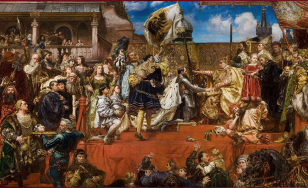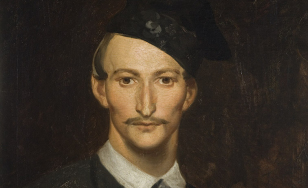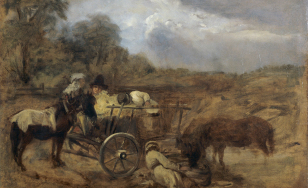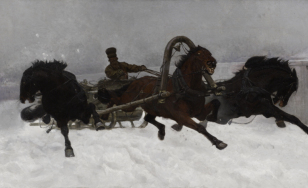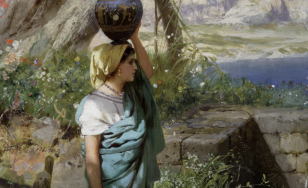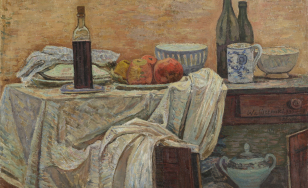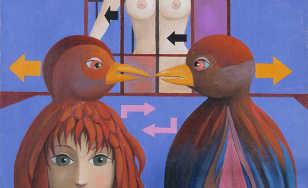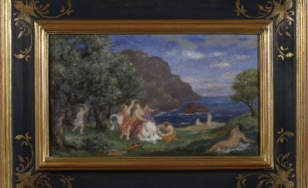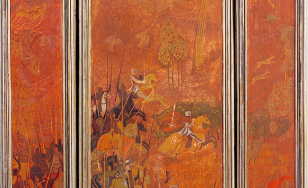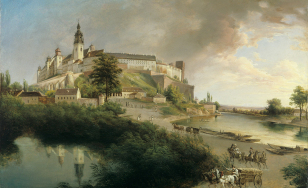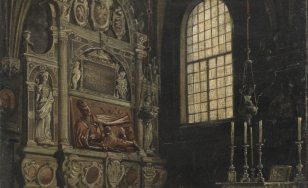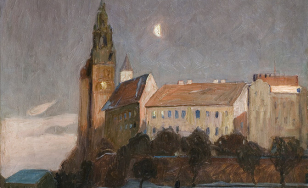DECEMBER 24, 25 THE CASTLE IS CLOSED | Wawel tickets official site: bilety.wawel.krakow.pl
Painting
The collection of paintings comprises over 1000 oil paintings and several hundred watercolours, pastels and
drawings.
drawings.
In its core the most valuable works are collections donated by Jerzy Mycielski (1928), Leon Piniński (1931) and Karolina Lanckorońska (1994-2002, her father Karol’s collection). Easel paintings from the 14th to 20th c. represent all major centres of European painting.
What is particularly valuable is a collection of early Italian paintings, the largest in Poland, which has been augmented by 82 works from the Lanckoroński family collection. There are works by Simone Martini, Bernard Daddi, Bartolo di Fredi, Apollonius di Giovanni, Jacopo del Sellaio, Vittore Crivella, Dosso Dossi, Paris Bordone, Garofal, Giorgio Vasari, Alessandro Allori, and Leandro and Francesco Bassano. There are also other paintings by Italian artists such as Antonio Zanchi, Pietro Muttoni (Della Vecchia), Francesco Solimena, Alessandro Magnasco and Giovanni Battista Tiepolo.
A valuable collection of Gothic and Renaissance Dutch paintings includes works from the school of Roger van der Weyden and Quentin Massys, works by Pieter Coecke van Aelst, Ambrosius Benson, Jan Sanders van Hemessen and Bartholomaeus Spranger. Baroque Flemish painting is represented by pictures by Francken II Frans and from Rubens’s workshop and school. There is a very interesting collection of Dutch paintings, e.g. works by Govaert Flinck, Jan van Noordt, Jan Lievens, Michiel van Musscher, Jan van Kessel, Jan Verkolje I, Nicolaes Berchem and Krzysztof Lubieniecki.
Renaissance paintings from German countries include works by Georg Pencz, Christopher Amberger and Ludger Tom Ring, and works connected with Hans Kulmbach and Lucas Cranach the Younger.
In the French painting collection the most important works are those from the 19th c by such masters as Eugène Delacroix, Theodore Rousseau, Charles Daubigny or Diaz de la Peña.
English painting, represented by 30 works from the 17th -19th c., mainly portraits, is the most valuable collection in Poland (e.g. William Dobson, George Romney).
The Polish painting collection includes works from Gothic times to the 20th c. Renaissance and Baroque portraits by royal painters, such as Marcin Kober, Tomas Dolabella, Daniel Schulz the Younger, Jan Tricius and Louis de Silvestre, are especially interesting. Royal chambers boasted historic scenes, royal portraits and also portraits of the gentry. There is an interesting collection of modern Polish painting, represented by works of Marcello Bacciarelli and Jan Norblin, or Jan Chrzciciel Lampi, mostly presented in the Pieskowa Skała branch of the museum. Romanticism, realism and academism are represented by works of Piotr Michałowski, Artur Grottger, Aleksander Kotsis, Jan Matejko, Józef Chełmoński, Władysław Podkowiński or
Henryk Siemiradzki. Secession and symbolism are represented by works of Jacek Malczewski, Julian Fałat, Jan Stanisławski, Wojciech Weiss, Ferdynand Ruszczyc, Stanisław Lentz, Vlastimil Hoffman and Włodzimierz Jarocki. The Wawel collection of paintings also includes works by other Polish artists; Zygmunt Waliszewski, Jan Cybis, Eugeniusz Geppert, Kazimierz Mikulski and Jerzy Nowosielski.
Watercolours are dominated by views of Wawel from the turn of the 20th c., mostly by Leon Wyczółkowski, and the collection of 228 works by Jacek Malczewski (from the Lanckoroński family collection) includes the most valuable drawings.
What is particularly valuable is a collection of early Italian paintings, the largest in Poland, which has been augmented by 82 works from the Lanckoroński family collection. There are works by Simone Martini, Bernard Daddi, Bartolo di Fredi, Apollonius di Giovanni, Jacopo del Sellaio, Vittore Crivella, Dosso Dossi, Paris Bordone, Garofal, Giorgio Vasari, Alessandro Allori, and Leandro and Francesco Bassano. There are also other paintings by Italian artists such as Antonio Zanchi, Pietro Muttoni (Della Vecchia), Francesco Solimena, Alessandro Magnasco and Giovanni Battista Tiepolo.
A valuable collection of Gothic and Renaissance Dutch paintings includes works from the school of Roger van der Weyden and Quentin Massys, works by Pieter Coecke van Aelst, Ambrosius Benson, Jan Sanders van Hemessen and Bartholomaeus Spranger. Baroque Flemish painting is represented by pictures by Francken II Frans and from Rubens’s workshop and school. There is a very interesting collection of Dutch paintings, e.g. works by Govaert Flinck, Jan van Noordt, Jan Lievens, Michiel van Musscher, Jan van Kessel, Jan Verkolje I, Nicolaes Berchem and Krzysztof Lubieniecki.
Renaissance paintings from German countries include works by Georg Pencz, Christopher Amberger and Ludger Tom Ring, and works connected with Hans Kulmbach and Lucas Cranach the Younger.
In the French painting collection the most important works are those from the 19th c by such masters as Eugène Delacroix, Theodore Rousseau, Charles Daubigny or Diaz de la Peña.
English painting, represented by 30 works from the 17th -19th c., mainly portraits, is the most valuable collection in Poland (e.g. William Dobson, George Romney).
The Polish painting collection includes works from Gothic times to the 20th c. Renaissance and Baroque portraits by royal painters, such as Marcin Kober, Tomas Dolabella, Daniel Schulz the Younger, Jan Tricius and Louis de Silvestre, are especially interesting. Royal chambers boasted historic scenes, royal portraits and also portraits of the gentry. There is an interesting collection of modern Polish painting, represented by works of Marcello Bacciarelli and Jan Norblin, or Jan Chrzciciel Lampi, mostly presented in the Pieskowa Skała branch of the museum. Romanticism, realism and academism are represented by works of Piotr Michałowski, Artur Grottger, Aleksander Kotsis, Jan Matejko, Józef Chełmoński, Władysław Podkowiński or
Henryk Siemiradzki. Secession and symbolism are represented by works of Jacek Malczewski, Julian Fałat, Jan Stanisławski, Wojciech Weiss, Ferdynand Ruszczyc, Stanisław Lentz, Vlastimil Hoffman and Włodzimierz Jarocki. The Wawel collection of paintings also includes works by other Polish artists; Zygmunt Waliszewski, Jan Cybis, Eugeniusz Geppert, Kazimierz Mikulski and Jerzy Nowosielski.
Watercolours are dominated by views of Wawel from the turn of the 20th c., mostly by Leon Wyczółkowski, and the collection of 228 works by Jacek Malczewski (from the Lanckoroński family collection) includes the most valuable drawings.
“Occasio,” a picture by Frans Francken the Younger (1581–1642), a member of afrom a large family of painters in Antwerp, was donated to Wawel Royal Castle in 1933. It was painted in 1627—the date appears on a book at the bottom left of the picture, and bottom center is a plaque with a Latin inscription which, loosely translated, reads: “Don’t let a favorable opportunity get away, in front he has a lock of hair, in the back he’s bald; seize him by the forelock.”
The picture was undoubtedly painted for the cabinet of a contemporary Antwerp collector, but the original patron remains unknown. Equally unknown was the destination of a nearly identical composition preserved in the Hermitage in Saint Petersburg. The theme of the painting had been subject to numerous interpretation. According to the most recent, proposed by Sibylle Appuh-Radtke, the picture depicts the ideal of the homo politicus and his state; it illustrates the theory of statecraft and law formulated by Plato in The Laws (Greek Nomoi).
The picture was undoubtedly painted for the cabinet of a contemporary Antwerp collector, but the original patron remains unknown. Equally unknown was the destination of a nearly identical composition preserved in the Hermitage in Saint Petersburg. The theme of the painting had been subject to numerous interpretation. According to the most recent, proposed by Sibylle Appuh-Radtke, the picture depicts the ideal of the homo politicus and his state; it illustrates the theory of statecraft and law formulated by Plato in The Laws (Greek Nomoi).
LOG IN
REGISTRATION
